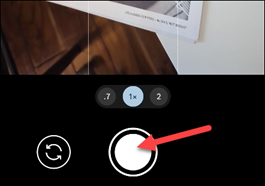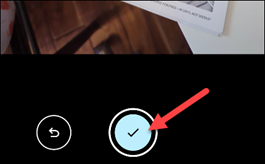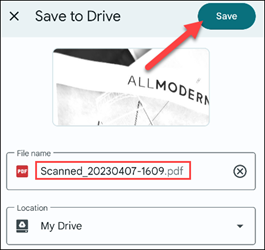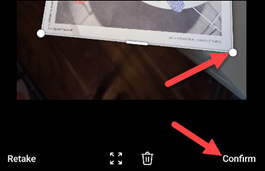|
|
||||||||||||||||||||||||||||||||||||||||||||||||||||||||||||||||||||||||||||||||||||||||||||||||||
|
||||||||||||||||||||||||||||||||||||||||||||||||||||||||||||||||||||||||||||||||||||||||||||||||||
|
Privacy Policy | Editorial Policy | Profit Policy | Join the Association | List of Members | Contact us | Index | Links |
||||||||||||||||||||||||||||||||||||||||||||||||||||||||||||||||||||||||||||||||||||||||||||||||||
|
Back Go to page: 1 2 3 4 5 6 7 8 9 10 11 12 13 14 15 16 17 18 19 20 Forward |
||||||||||||||||||||||||||||||||||||||||||||||||||||||||||||||||||||||||||||||||||||||||||||||||||
|
Out in the shed with Ted. |
||||||||||||||||||||||||||||||||||||||||||||||||||||||||||||||||||||||||||||||||||||||||||||||||||
|
|
||||||||||||||||||||||||||||||||||||||||||||||||||||||||||||||||||||||||||||||||||||||||||||||||||
|
|
||||||||||||||||||||||||||||||||||||||||||||||||||||||||||||||||||||||||||||||||||||||||||||||||||
|
|
||||||||||||||||||||||||||||||||||||||||||||||||||||||||||||||||||||||||||||||||||||||||||||||||||
|
Welcome to Kedron-Wavell Services Club. Located in the vibrant Chermside precinct, only 15 minutes north of Brisbane’s CBD, the Club is Brisbane’s award winning, premier function, entertainment and leisure destination.
With a cosmopolitan atmosphere and elegant features, Kedron-Wavell Services Club is the perfect place to meet your family and friends… or meet new friends! We’re easy to find and offer free off-street parking for members and guests.
Click the pic above to go to the Club's web site
|
||||||||||||||||||||||||||||||||||||||||||||||||||||||||||||||||||||||||||||||||||||||||||||||||||
|
|
||||||||||||||||||||||||||||||||||||||||||||||||||||||||||||||||||||||||||||||||||||||||||||||||||
|
Contents
|
||||||||||||||||||||||||||||||||||||||||||||||||||||||||||||||||||||||||||||||||||||||||||||||||||
|
|
||||||||||||||||||||||||||||||||||||||||||||||||||||||||||||||||||||||||||||||||||||||||||||||||||
|
|
||||||||||||||||||||||||||||||||||||||||||||||||||||||||||||||||||||||||||||||||||||||||||||||||||
|
|
||||||||||||||||||||||||||||||||||||||||||||||||||||||||||||||||||||||||||||||||||||||||||||||||||
|
Pension rates - WEF 20 Sept 2023
|
||||||||||||||||||||||||||||||||||||||||||||||||||||||||||||||||||||||||||||||||||||||||||||||||||
The Carer payment is unchanged at $136.50 per fortnight. |
||||||||||||||||||||||||||||||||||||||||||||||||||||||||||||||||||||||||||||||||||||||||||||||||||
|
|
||||||||||||||||||||||||||||||||||||||||||||||||||||||||||||||||||||||||||||||||||||||||||||||||||
|
|
||||||||||||||||||||||||||||||||||||||||||||||||||||||||||||||||||||||||||||||||||||||||||||||||||
|
Ghost Bat – Australia.
Boeing has an Australian division and part of its function is to develop aircraft for the Royal Australian Air Force (RAAF). While Australia’s military may not be as large and well-funded as the US, it is a high-tech and well-equipped fighting force. The first aircraft to be completely produced by Australians in a half-century is shaping up to be like the Valkyrie UAV, a semi-autonomous aircraft that uses AI for flight control. The project had been known as Loyal Wingman but is now referred to by its official moniker, MQ-28A Ghost Bat. Giving it an official designation represents another step toward the completion and deployment of the project and naming it after a species native to Australia helps denote it as an Aussie original.
The project is a joint effort between the RAAF and Boeing’s Australian division. With the heavy involvement of an American company and the historical sharing of intelligence and hardware means that the Ghost Bat will be adopted elsewhere with the USAF Secretary recently giving the program praise and signalling continued investment in autonomous AI technology.
Given Australia’s significant geographic isolation, the Ghost Bat may be more of a menace to rogue wallabies, but should the RAAF join its defence partners in combat, this will be a fearsome component of their fleet.
There’s more information HERE.
|
||||||||||||||||||||||||||||||||||||||||||||||||||||||||||||||||||||||||||||||||||||||||||||||||||
|
My teacher told me not to worry about spelling as soon there will be autocorrect everywhere. And for that I am eternally grapefruit.
|
||||||||||||||||||||||||||||||||||||||||||||||||||||||||||||||||||||||||||||||||||||||||||||||||||
|
Did You Know? The chocolate between the wafers of a Kit-Kat bar isn’t the same chocolate used on the exterior of the bars—it’s made from mashed up Kit-Kat bars that failed their quality checks because of exterior air bubbles, off-centre wafers, other imperfections, or simply not being shiny enough.
Don’t say we don’t handle the important stuff here!!
Can’t shake that tune? The science behind earworms.
Ever had a song stuck in your head, playing on repeat? This near-universal phenomenon, known as an earworm or involuntary musical imagery (INMI), could affect up to 98 per cent of us, according to some research.
While previous studies have focused on the tempos and pitches of these catchy tunes, new research published in Music & Science suggests that repetition is the key to understanding why certain songs become earworms. Professor Emery Schubert, the author of the systematic review study from the Empirical Musicology Laboratory in the School of the Arts & Media at UNSW Sydney, found that the music must contain repetition to become an earworm.
“Drawing together the literature, it appears there’s an essential characteristic necessary for a song to roll out the earworms – the music itself must have some repetition in it.”
Hooked on the chorus.
Professor Schubert said most reported earworms are the chorus of songs, which are inevitably the pieces of the music repeated the most. “Most research on earworms to date analyses what’s in the hook – the short riff or passage to catch the ear of the listener, but what hasn’t been considered is that the hook is invariably repeated in the music, most commonly in the chorus.”
The implication is that earworms might not have anything to do with the musical features at all. It largely doesn’t matter what the music is, as long as repetition is part of the music structure. But repetition alone doesn’t explain the entire phenomenon. Several preconditions, such as recency and familiarity with the music, must be met for an earworm to occur.
Additionally, the study found that earworms tend to happen when individuals are in a low-attentional state, often referred to as mind-wandering or relaxation. Inside your relaxed mind, you don’t have to follow the exact structure of the music. Your mind is free to wander wherever it likes, and the easiest place to go is the repeated fragment and to simply repeat it. In a 2021 article published in the Harvard Gazette, David Silbersweig, the medical school’s Stanley Cobb Professor of Psychiatry, who studies the cognitive neuroscience of music, said the human brain has evolved to remember associations and snippets of music. He said earworms are thought to result from “stuck” connections in the brain, causing involuntary playback of musical memories.
Professor Silberswieg said that people with attention-deficit disorder may experience fewer earworms, while those with obsessive-compulsive disorder may be more prone to them.
Shake it off.
For those of us who want rid ourselves of an unwanted earworm, Professor Schubert suggests finishing the song, consciously thinking of another piece of music, or removing oneself from triggers, such as words or memories related to the music or lyrics. He said the new research provides valuable insights into consciousness and how we organise and recall information.
“We don’t go out to find earworms, but earworms find us,” he said. There are still several puzzles we need to solve to understand not only their nature but what it might mean for cognition and memory.
|
||||||||||||||||||||||||||||||||||||||||||||||||||||||||||||||||||||||||||||||||||||||||||||||||||
|
Bill: “Sometimes I think today’s Air Force isn’t as tough as it used to be”. Bob: “I know how you feel, I had the same discussion with the Sqn manicurist this morning.”
|
||||||||||||||||||||||||||||||||||||||||||||||||||||||||||||||||||||||||||||||||||||||||||||||||||
|
Statistics.
What do they say? “There are three kinds of lies: Lies, Damned Lies and Statistics” This phrase describes the persuasive power of statistics to bolster weak arguments.
Whether through malice, poor training or simple ignorance, bad statistics have a rich and storied legacy stretching back as long as humans have been counting things. Countless books, papers and blogs chronicle the myriad ways in which data and statistics are abused to lend false support to arguments in fields ranging from the academic world to public policy. As data-driven journalism is on the rise and calls continue to grow for increased evidence-based “fact checking,” it is worth stepping back to ask how much of the “fake news” that surrounds us today is based at least in part on bad statistics.
Have a look HERE .
|
||||||||||||||||||||||||||||||||||||||||||||||||||||||||||||||||||||||||||||||||||||||||||||||||||
|
Emergency landing of the week.
These days aircraft are very reliable and emergency landings are rare but sometimes they happen and are unavoidable.
THIS is one such time.
And ain't THIS the truth.
Nesting Falcon.
I've seen many remarkable nature photographs over the years but this photo of a nesting Falcon is perhaps the most remarkable nature shot that I've ever seen. I hope you enjoy it as much as I did. Nature is truly breath-taking!
See HERE.
|
||||||||||||||||||||||||||||||||||||||||||||||||||||||||||||||||||||||||||||||||||||||||||||||||||
|
Men and women have drastically different views on mess.
Often household chores tend to be split into more ‘masculine’ and more ‘feminine’ tasks, but not all chores are created equal. Deep cleaning the bathroom is miles away from taking out the bins. While mowing the lawn and washing the dishes aren’t on the same level, effort-wise.
Academics from the University of Cambridge now believe women do the majority of household chores because men do not see mess in the same way. Apparently, men looking at a pile of dishes in the sink or smears on the kitchen counter will see disorder. While women view it as a job in need of completing, and they often feel the urge to do so.
The theorists believe that these perceived differences come down to how each gender is raised. Social training during childhood and early adulthood wires the brains of men and women differently. Females, according to them, are instilled with an instinctive urge to keep things neat and tidy if they encounter a mess whereas men, simply put, never get that compulsion. As a result, this could lead to the notion of women doing more housework as a natural default. This can lead to a difficult situation where a woman is trapped between doing jobs as soon as they need doing while trying not to solely shoulder the domestic burden.
The Cambridge philosophers investigated why women, on the whole, are left to do more housework than men and why men fail to see this imbalance. The issue, they believe, is that men and women see everything in different ways. They have dubbed this phenomenon the “affordance theory”. The philosophers write in their paper: “A floor can afford sweeping, dishes can afford cleaning, mess can afford tidying, a crying infant can afford nappy changing, and so on. We suggest that for many domestic tasks, women are more likely to perceive the corresponding domestic task affordance.”
Professor Paulina Sliwa, a philosopher at the University of Vienna who worked on the topic while at the University of Cambridge, says this mechanism is backed up by science. “Neuroscience has shown that perceiving an affordance can trigger neural processes preparing you for physical action. This can range from a slight urge to overwhelming compulsion, but it often takes mental effort not to act on an affordance.”
Every person sees a specific thing and perceives it differently. For example, one person might look at a structure and think it is easily climbable whereas another might think it’s impossible. This same idea can be applied to mess and clutter around the home; one individual may look at a carpet and think ‘vacuum’ whereas another may see the same carpet and deem it ignorable. Dr Tom McClelland, from Cambridge University’s department of history and philosophy of science, says that applying this theory to the home might explain the inequality in chore workload. The team believes that men and women see the domestic situation differently as a result of how they were raised.
“This puts women in a catch-22 situation: either inequality of labour or inequality of cognitive load.”
Some skills are explicitly gendered, such as cleaning or grooming and girls are expected to do more domestic chores than boys. This trains their ways of seeing the domestic environment, to see a counter as ‘to be wiped’.
Cambridge academics make it clear that the “gendered affordance perception hypothesis”, as it has been called, doesn’t absolve men of any household duties. Yes, men may not have the same automatic impulse to tidy up a mess when they enter a space, but that doesn’t mean they’re not capable of making that decision to get cleaning in their own time.
Time on domestic chores.
A few years ago, the ABS surveyed 2000 households to determine who does what and when. They found both men and women spend, on average, 4 hours, 23 minutes a day watching video, listening to audio or some other activity involving a computer or hand held device and they found the average worker (both males and females) spends 8 hours, 44 minutes a day working.
But when it comes to domestic chores, there is a definite difference. See HERE.
|
||||||||||||||||||||||||||||||||||||||||||||||||||||||||||||||||||||||||||||||||||||||||||||||||||
|
A police officer came to my house and asked me where I was between 5 and 6. He seemed irritated when I answered “Kindergarten”.
|
||||||||||||||||||||||||||||||||||||||||||||||||||||||||||||||||||||||||||||||||||||||||||||||||||
|
How to scan documents to PDF with your Android phone’s camera.
There was a time when people owned a scanner, but that time has passed. Nowadays, all you really need is an Android phone with a camera.
There are several ways to scan and save using your Android phone, Google Drive and Microsoft Lens are two, here’s how to do it.
How to Scan Documents on Android Using Google Drive.
|
||||||||||||||||||||||||||||||||||||||||||||||||||||||||||||||||||||||||||||||||||||||||||||||||||
|
||||||||||||||||||||||||||||||||||||||||||||||||||||||||||||||||||||||||||||||||||||||||||||||||||
|
|
||||||||||||||||||||||||||||||||||||||||||||||||||||||||||||||||||||||||||||||||||||||||||||||||||
|
|
||||||||||||||||||||||||||||||||||||||||||||||||||||||||||||||||||||||||||||||||||||||||||||||||||
|
Thought of joining a gym yesterday. NA!
|
||||||||||||||||||||||||||||||||||||||||||||||||||||||||||||||||||||||||||||||||||||||||||||||||||
|
The best way to fry an egg.
Once you try Spanish fried eggs, you’ll never cook them any other way.
There are lots of ways to cook an egg but fried is probably the favourite. Fried eggs are almost foolproof to make and can turn just about anything into a hearty meal, from a pile of baked beans to avocado toast.
While there are a number of ways to fry an egg, from sunny-side up to over easy, one method in particular might be the very best way to go about it. It’s called a Spanish fried egg, and it’s something you should get to know ASAP.
What Is a Spanish Fried Egg?
To prepare a Spanish fried egg, pour about 1/4-inch of olive oil into a small, heavy pant. Heat it over medium-high heat until it’s extremely hot (but not smoking). Crack 1 egg into a small dish. When the oil is hot, carefully slip the egg in and reduce the heat to medium-low. Then spoon some of the oil over the egg as it cooks. Remove the egg with a slotted spoon after no more than 1½ minutes (when the white puffs and becomes crispy and golden-brown around the edges and when the yolk still jiggles).
Serve sprinkled with a bit of flaky salt and freshly ground black pepper.
|
||||||||||||||||||||||||||||||||||||||||||||||||||||||||||||||||||||||||||||||||||||||||||||||||||
|
A thief entered a house late one afternoon. He tied up the woman and at knife point asked the man to hand over the jewellery and money. The man started sobbing and said, “You can take anything you want but please untie the rope and free her!” Thief: ‘You must really love your wife!” Man: “Not particularly, but she will be coming home shortly!”
|
||||||||||||||||||||||||||||||||||||||||||||||||||||||||||||||||||||||||||||||||||||||||||||||||||
|
Choir
On Sunday 11th June 2023, 999 fellow choristers and I assembled at the Perth Concert Hall to perform 11 popular songs. Yep – you read it right ….. 1,000 singers. The audience was packed to the rafters with a full house who were invited to “sing along”. One of our songs was based on “Africa” as performed by the Angel City Chorale. The audience joined in with rubbing hands, clicking fingers, slapping thighs, etc. The energy, pre and post-performance, was so evident with many smiles and laughter. I, for one, will remember this memorable day for years to come. The inspiration, conception and direction was made by a wonderful man – Martin Meader. The love and warmth shown to this man by the 1,000 was palpable – he deserves a medal for bringing us so much joy. (Disclaimer:- I don’t get anything special from these words neither am I trying to “blow smoke up his bum”).
Click HERE for some pics of the event.
For those who wish to get involved, the Concert Hall has been booked for 30th June 2024 for the next 1,000 performance.
Tra-la-la,
Vietnam era music.
If you were around during the 60’s, when Vietnam was in full fling, THIS MUSIC will bring back some memories.
Australia’s iconic Owen gun
Ian Skennerton
The Owen gun, also known as the Owen Machine Carbine, is indeed an iconic firearm from Australia’s military history. It was the only mass-produced Australian-designed submachine gun used during World War II and in subsequent conflicts. The Owen gun was created by Evelyn Owen, an Australian soldier and inventor, in the early 1940s.
The design of the Owen gun was unique compared to other submachine guns of the time. The weapon had a distinctive look, it featured a top-mounted magazine which allowed for a more compact and ergonomic design. This design made it easier for soldiers to fire from the prone position or in close-quarters combat.
The Owen gun had a reputation for its reliability and effectiveness in combat. It was particularly well-suited for the harsh conditions of the Pacific Theatre during World War II, where its open-bolt design proved resistant to jamming caused by sand, mud, or other debris.
The Owen gun saw service with the Australian Army, Royal Australian Navy, and Royal Australian Air Force during World War II. It continued to be used by Australian forces in subsequent conflicts, including the Korean War and the Vietnam War. It was also exported to other countries, such as Papua New Guinea and Thailand.
After World War II, the Owen gun remained in service with the Australian military for several decades, eventually being phased out in the 1960s as more modern firearms became available. Today, the Owen gun is highly regarded as a symbol of Australian ingenuity and military history. It is often featured in museums and collections dedicated to firearms or military artifacts.
See HERE.
Some days.
Some days not everything goes according to plan – see HERE.
Popeye the Sailor-man.
Implosion of the Titan Submarine (18 June 2023)
The five passengers on the Titan met a truly violent and brutal end, but fortunately, it was also instant and without them even having time to realize it.
The bathyscaphe imploded with unimaginable force and speed, due to the enormous water pressure at those depths, which is about 380 atmospheres at 3,800 meters. This pressure corresponds to a compressive force of 380 kg per square centimetre, imagine this number multiplied by the square centimetres of the bathyscaphe's external surface.
According to calculations, the devastating implosion lasted just 1 millisecond (1 ms), with the walls accelerating from 0 to 2,400 km/h (just under Mach 2) in a fraction of a second. The duration of the implosion, 1 ms, was much shorter than the average time it takes for nerve signals to reach our brain, which is about 25 ms. The 5 occupants didn't notice anything, not even by mistake!
But the interesting part is yet to come, unfortunately…
The compression of the internal air happened so quickly that it was essentially adiabatic, that is, without heat dispersion. If we compress a gas, it heats up and the more rapid and intense the compression, the more the gas heats up. The implosion of the Titan essentially balanced the internal pressure with the external one. Doing some calculations, it turns out that to balance the two pressures, the internal air was compressed to a volume 70 times smaller with a temperature increase from 20 degrees to almost 1,300 degrees, all in a single millisecond!
If you consider that the autoignition temperature of paper is about 200-220 degrees and that of iron is about 1,315 degrees at 1 bar, this means that in 1 ms the interior of the bathyscaphe became practically hell, igniting and carbonizing everything that was combustible (clothes, hair, fur, and epidermis included). With the added severity of being at 385 bar, not just one...
Crushed to death by an imploding supersonic wall, and also carbonized...
Of course, it all lasted an instant and in a short time the temperature dropped to a few degrees of the seabed, the bathyscaphe disintegrated and the remains of the burnt bodies became a roast for fish and other abyssal creatures.
Anyway, I think THIS is funny.
|
||||||||||||||||||||||||||||||||||||||||||||||||||||||||||||||||||||||||||||||||||||||||||||||||||
|
Thought you’d want to know this!!
The U.S. Centres for Disease Control (CDC) says biological men who believe themselves to be women can “chestfeed” infants. Physicians are being told to provide transgender people with medication that mimics natural lactation – despite evidence that suggests such “milk” may be harmful to babies.
“Can transgender parents who have had breast surgery breastfeed or chestfeed their infants?” the CDC asks itself in the ‘Breastfeeding and special circumstances’ section of its website, answering with an emphatic “Yes.” “Some transgender parents who have had breast/top surgery may wish to breastfeed, or chestfeed (a term used by some transgender and non-binary parents), their infants,” it continues, adding that healthcare providers should help trans parents with, among other things, “[m]edication to induce lactation”.
Elsewhere, the CDC emphasizes that “[a]n individual does not need to have given birth to breastfeed or chestfeed” in a document that also advocates using language “inclusive of all gender identities” such as “pregnant person” and “lactating person” instead of “mother”.
Biological men posting pictures of themselves “chestfeeding” as an expression of “queer joy” has become a trend in recent months, but there are serious concerns about the nutritional quality of their “milk” and the drugs it may contain. One drug often used off-label to induce lactation, domperidone, may cause heart problems in babies.
Natural-born women are seemingly held to much higher standards when it comes to breastmilk safety, being advised not to drink alcohol when breastfeeding and even avoid all but low doses of aspirin, never mind the cocktail of drugs prescribed to most transwomen.
Bet you feel better now knowing that!!
Softies
|
||||||||||||||||||||||||||||||||||||||||||||||||||||||||||||||||||||||||||||||||||||||||||||||||||
|
Soap
Has anyone noticed that soap today seems not to last as long as it once did. These days you're lucky to get a week out of a cake of soap whereas once upon a time a cake, which was also a bit bigger, would last ages.
Must be my rough skin.
|
||||||||||||||||||||||||||||||||||||||||||||||||||||||||||||||||||||||||||||||||||||||||||||||||||
|
Blessed are those who are cracked for they are the ones who let in the light. |
||||||||||||||||||||||||||||||||||||||||||||||||||||||||||||||||||||||||||||||||||||||||||||||||||
|
|
||||||||||||||||||||||||||||||||||||||||||||||||||||||||||||||||||||||||||||||||||||||||||||||||||
| Ok, ok - I'm going back to my room now!
I'm Ted Mac - and you're not!
|
||||||||||||||||||||||||||||||||||||||||||||||||||||||||||||||||||||||||||||||||||||||||||||||||||
|
Back Go to page: 1 2 3 4 5 6 7 8 9 10 11 12 13 14 15 16 17 18 19 20 Forward |
||||||||||||||||||||||||||||||||||||||||||||||||||||||||||||||||||||||||||||||||||||||||||||||||||
|
|
||||||||||||||||||||||||||||||||||||||||||||||||||||||||||||||||||||||||||||||||||||||||||||||||||

























